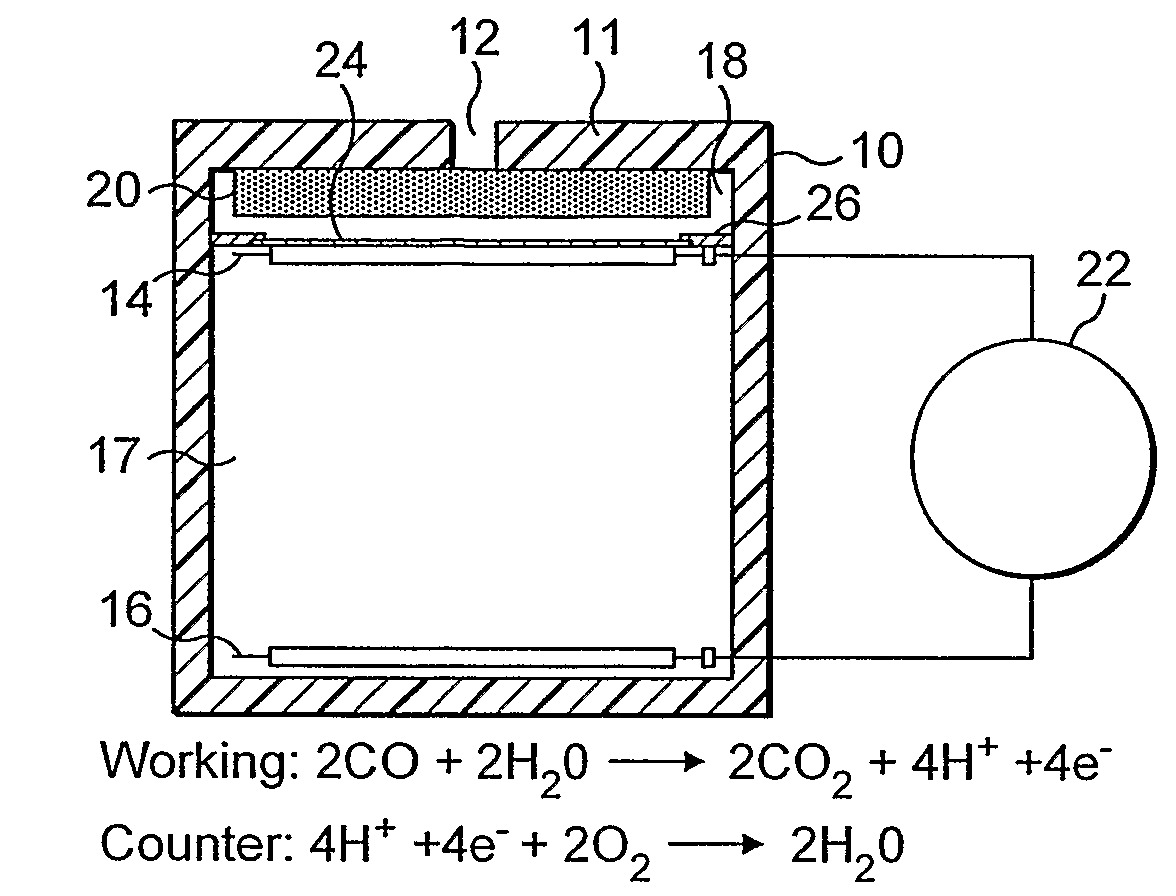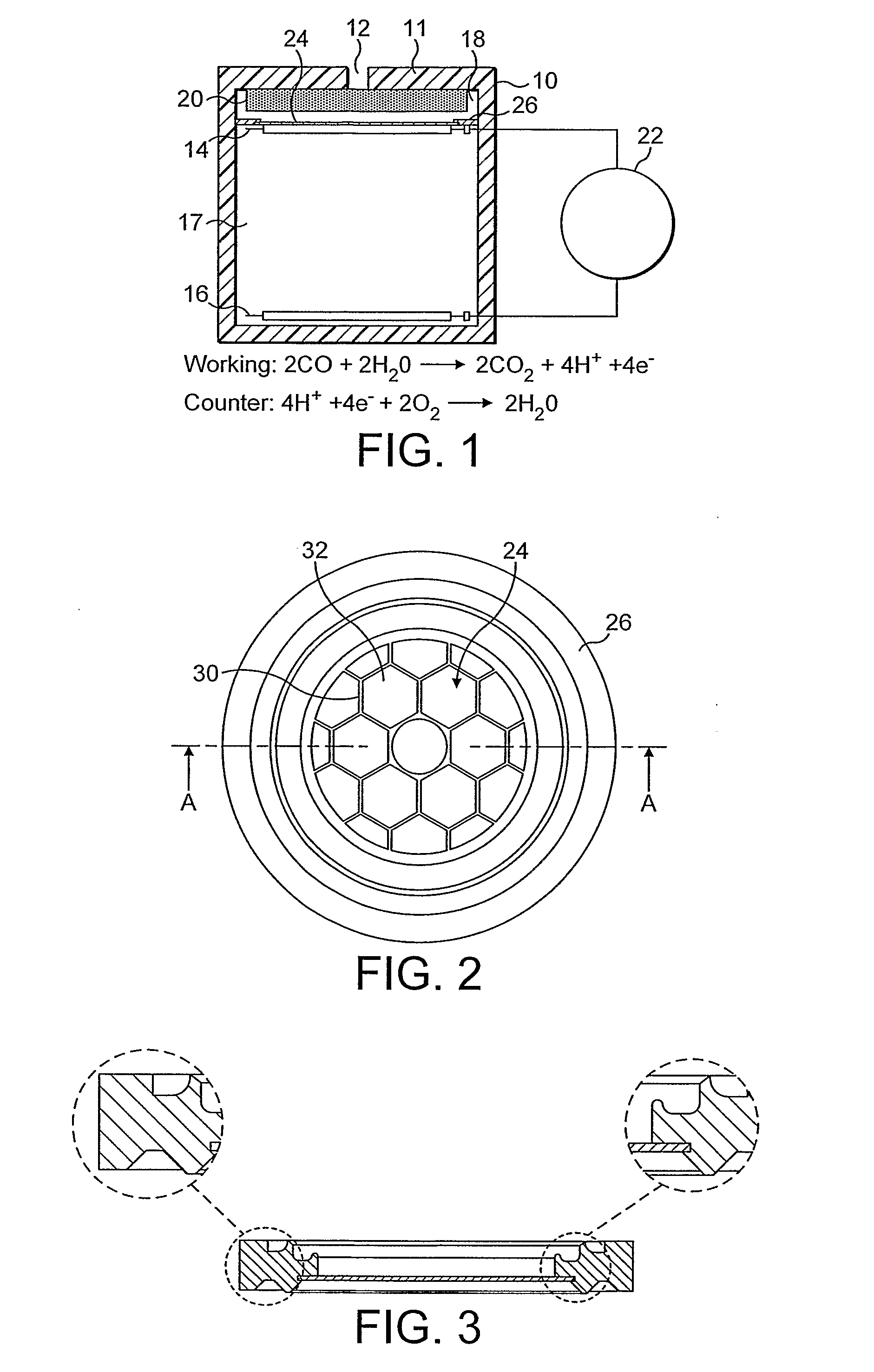Liquid Electrolyte Gas Sensor Comprising Rigid Porous Electrode Support
a technology of electrode support and liquid electrolyte, which is applied in the field of electrochemical gas sensors, can solve the problems of thin porous membrane of the working electrode, bending, stretching, and, in extreme cases, even splitting
- Summary
- Abstract
- Description
- Claims
- Application Information
AI Technical Summary
Benefits of technology
Problems solved by technology
Method used
Image
Examples
example
[0043]12 H2S sensors that are commercially available from Zellweger Analytics Limited under the trade mark SureCell were taken and each was modified by removing its cap with a gas access hole. Such SureCell sensors have a compressible electrode assembly made up of a working electrode in the form of PTFE sheet supporting a layer of catalyst, a reference electrode and a counter electrode; electrolyte absorbed in a porous material separates the working electrode form the reference and counter electrodes. The electrode assembly is held in a housing by a support in the form of a cross with arms 1 mm deep and 1 mm wide, which contacts the working electrode and compresses the electrode assembly into the housing.
[0044]The sensors were exposed to a test atmosphere containing hydrogen sulphide and the average current output of the 12 cells was 28.3 μA (2 standard deviations=1.2 μA).
[0045]A further batch of 12 H2S SureCell sensors were taken and each was modified by removing its cap with a gas...
PUM
| Property | Measurement | Unit |
|---|---|---|
| thickness | aaaaa | aaaaa |
| width | aaaaa | aaaaa |
| width | aaaaa | aaaaa |
Abstract
Description
Claims
Application Information
 Login to View More
Login to View More - R&D
- Intellectual Property
- Life Sciences
- Materials
- Tech Scout
- Unparalleled Data Quality
- Higher Quality Content
- 60% Fewer Hallucinations
Browse by: Latest US Patents, China's latest patents, Technical Efficacy Thesaurus, Application Domain, Technology Topic, Popular Technical Reports.
© 2025 PatSnap. All rights reserved.Legal|Privacy policy|Modern Slavery Act Transparency Statement|Sitemap|About US| Contact US: help@patsnap.com


